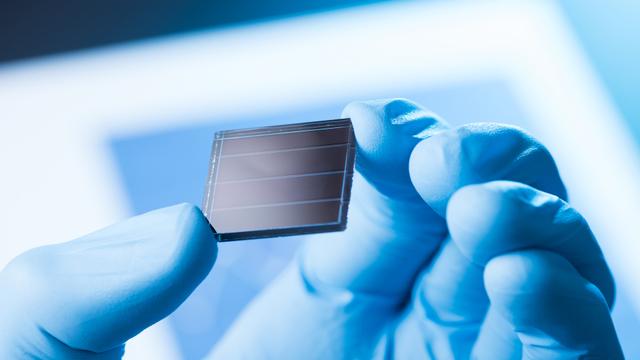World News15.07.2024
Organic solar panel turns 20% of sunlight into electricity

QAZAQ GREEN. Researchers at the University of Kansas have made a breakthrough in understanding organic semiconductors, hinting at more efficient and versatile solar cells, reports Interesting Engineering.
For years, silicon has dominated the solar energy landscape. Its efficiency and durability have made it the go-to material for photovoltaic panels. However, silicon-based solar cells are rigid and expensive to produce, limiting their potential for curved surfaces.
Organic semiconductors, these carbon-based materials offer a viable alternative at a lower cost and with greater flexibility. “They can potentially lower the production cost for solar panels because these materials can be coated on arbitrary surfaces using solution-based methods — just like how we paint a wall,” explained Wai-Lun Chan, associate professor of physics & astronomy at the University of Kansas.
But these organic semiconductors aren’t just about cost savings. They boast an ability to be tuned to absorb specific wavelengths of light, opening up a plethora of new possibilities. “These characteristics make organic solar panels particularly suitable for use in next-generation green and sustainable buildings,” noted Chan. Imagine transparent and colored solar panels, seamlessly integrated into architectural designs.
For all these advantages, organic solar cells have struggled to match the efficiency of their silicon counterparts. While silicon panels can convert up to 25% of sunlight into electricity, organic cells have typically hovered around 12% efficiency. This gap has proved to be a significant obstacle to widespread adoption.
Unlocking efficiency
Recent developments have rejuvenated the excitement around organic semiconductors. A new class of materials called non-fullerene acceptors (NFAs) pushed organic solar cell efficiency closer to 20%, narrowing the gap with silicon.
The Kansas research team set out to understand why NFAs perform so much better than other organic semiconductors. Their investigation led to a surprising discovery: in certain circumstances, excited electrons in NFAs can gain energy from their surroundings instead of losing it.
This finding flies in the face of conventional wisdom. “This observation is counterintuitive because excited electrons typically lose their energy to the environment like a cup of hot coffee losing its heat to the surrounding,” Chan explained.
Led by graduate student Kushal Rijal, the team experimented with a sophisticated technique called time-resolved two-photon photoemission spectroscopy. This method allowed them to track the energy of excited electrons to less than a trillionth of a second.
An unlikely ally
The researchers believe this unusual energy gain stems from a combination of quantum mechanics and thermodynamics. At the quantum level, excited electrons can appear to exist on multiple molecules simultaneously.
Coupled with the second law of thermodynamics, this quantum behavior reverses the direction of heat flow.
“For organic molecules arranged in a specific nanoscale structure, the typical direction of the heat flow is reversed for the total entropy to increase,” Rijal explained in a press release. “This reversed heat flow allows neutral excitons to gain heat from the environment and dissociates into a pair of positive and negative charges. These free charges can in turn produce electrical current.”
Beyond solar cells
Beyond improving solar cells, the team believes that their findings are applicable in other areas of renewable energy research. They think the discovered mechanism will lead to more efficient photocatalysts to convert carbon dioxide into organic fuels.
“Despite entropy being a well-known concept in physics and chemistry, it’s rarely been actively utilized to improve the performance of energy conversion devices,” emphasized Rijal.
The team’s findings were published in the journal Advanced Materials.
Kazakhstan and UAE reaffirm strategic energy partnership with 1 GW wind project
Solar becomes EU’s top power source for the first time ever
How decentralised renewables transform healthcare services in rural Zimbabwe
Chinese company to build solar and wind power plants in Kyrgyzstan
Seaturns raises €2.45 million to industrialize wave energy technology and accelerate global rollout
Trump signs executive order to end subsidies for wind and solar energy
Uzbekistan's solar and wind power plants generate 5 Billion kWh since beginning of the year
Green Corridor Alliance JV registered in Baku to promote green energy development in Central Asia and the South Caucasus
In the EU renewable energy supply grew by 3.4% in 2024
IRENA accepting renewable energy project proposals in Central Asia until August 15
Astana to host Electronica Expo Kazakhstan Electronics Exhibition
WB gives rundown of Azerbaijan's green energy grid volume prospects
US solar sets new records as renewables nearly match natural gas – EIA
‘Wings’ on poles: Bill Gates-backed breakthrough wind turbine facility breaks ground
Perovskite tandem solar cell achieves new efficiency record
Kazakhstan and China endorse draft SCO joint statement on sustainable energy development
Innovative research on organic solar cells for space applications
Kazakhstan and Uzbekistan drive green energy progress in Central Asia
KazMunayGas launches pilot green hydrogen project in Atyrau
How private homeowners in Kazakhstan can make money from solar panels











